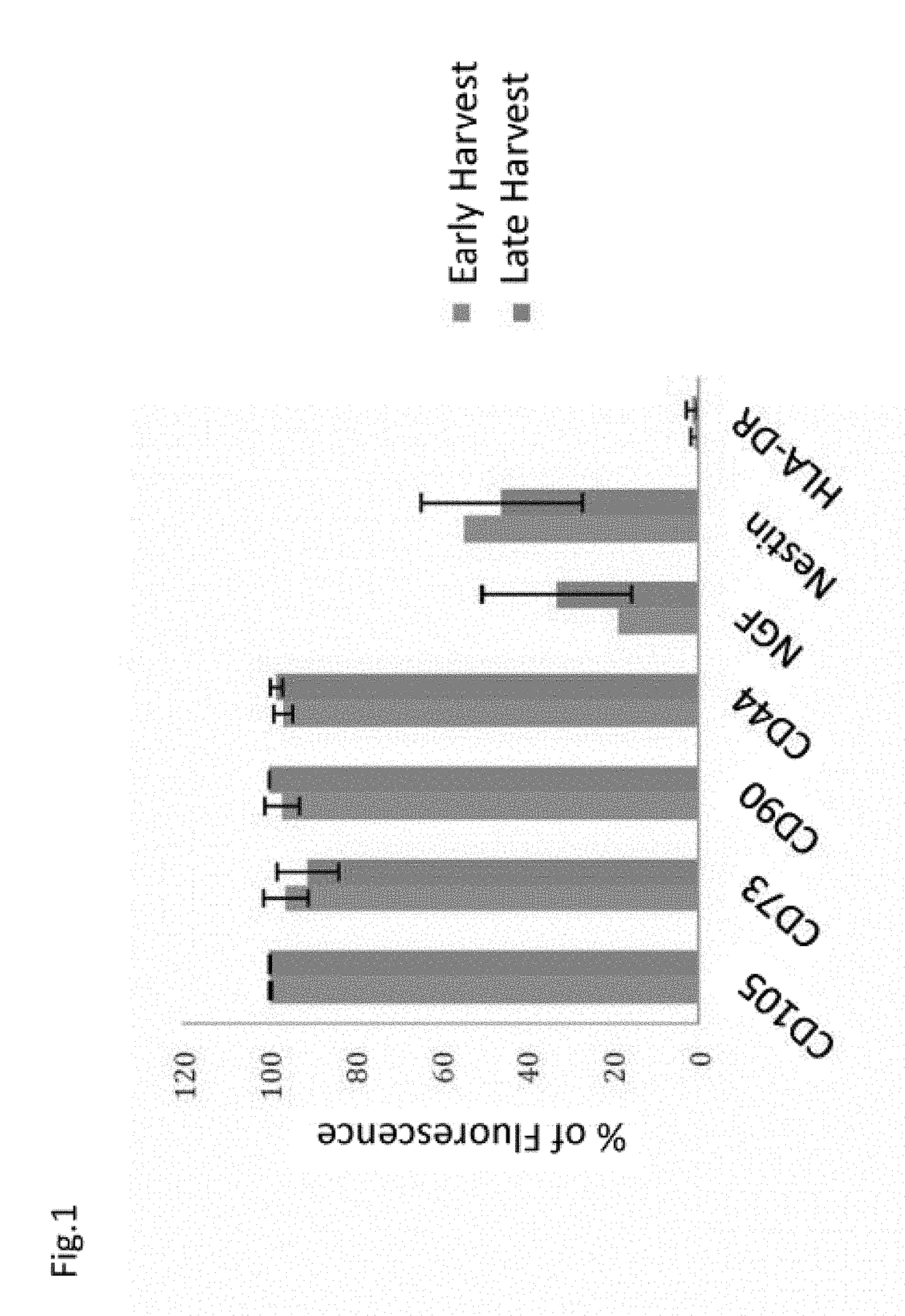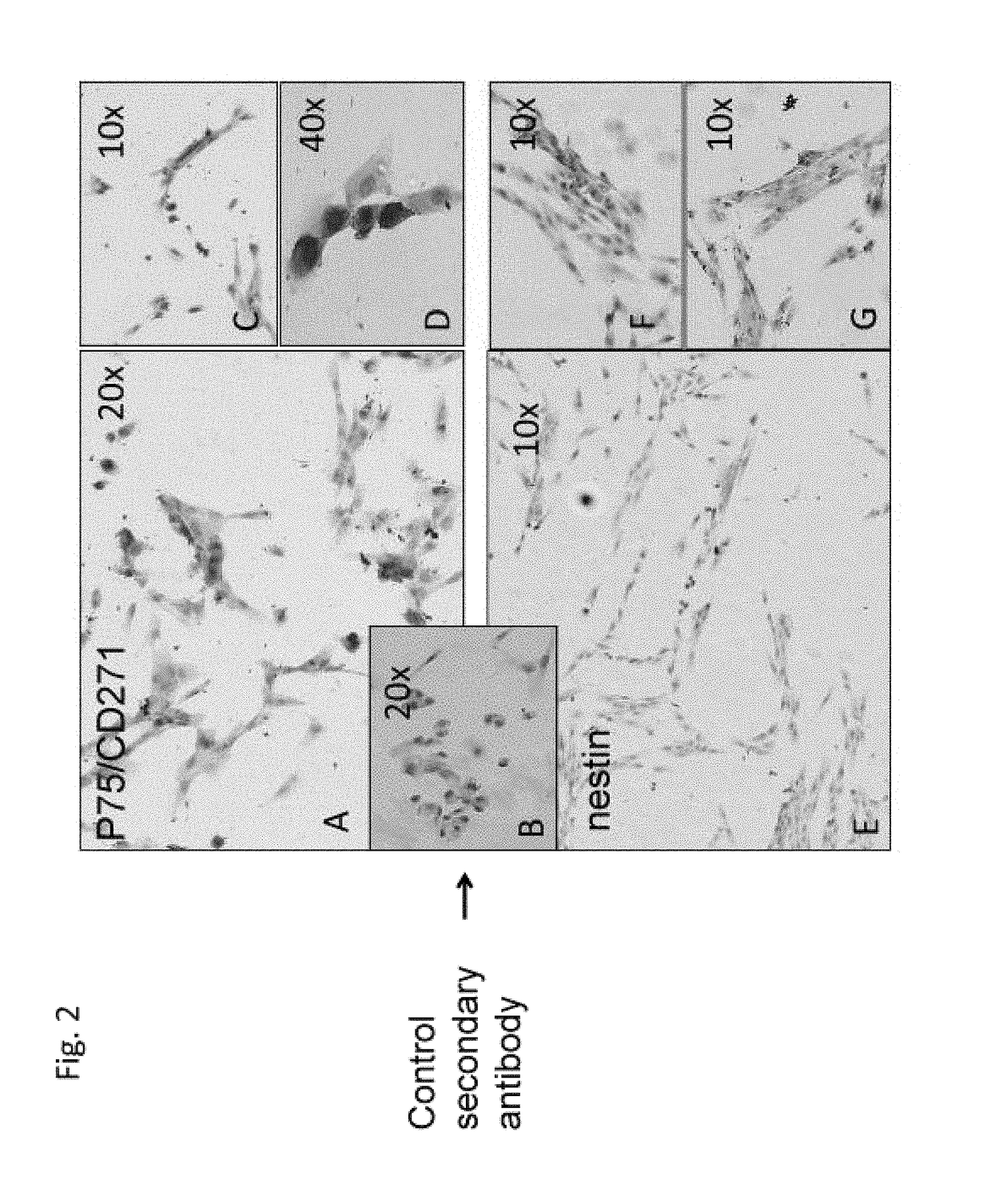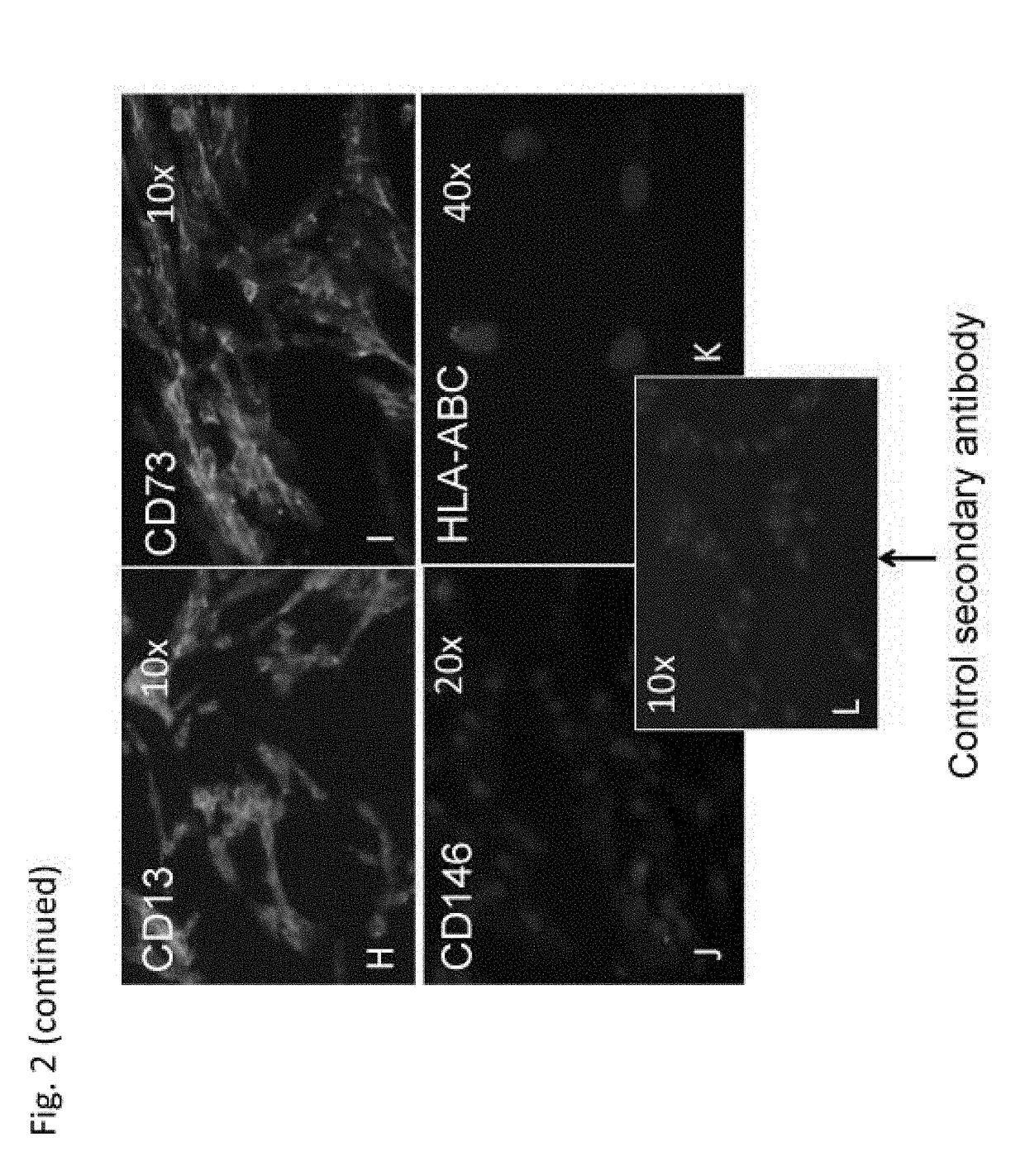Stem cells expressing mesenchymal and neuronal markers, compositions thereof, and methods of preparation thereof
a technology of stem cells and mesenchymal and neuronal markers, applied in the direction of nervous system cells, cd44, animal/human proteins, etc., can solve the problems of difficult to find the ideal dose for each patient, impede the development of efficient therapeutic interventions, and inhibit the ability to treat brain damage, etc., to prevent the rejection of hidpscs
- Summary
- Abstract
- Description
- Claims
- Application Information
AI Technical Summary
Benefits of technology
Problems solved by technology
Method used
Image
Examples
example 1
ization of Early and Late Harvests IDPSCs and Derivation of Neural and Glial Cells from the Early and Late Harvest IDPSCs
Characterization of Early and Late Harvests IDPSCs
[0172]In order to characterize the properties of the hIDPSC, from the early (n=8) and late (n=4) harvests (Table 1), flow cytometric analyzes of the mesenchymal markers CD13, CD105, CD73, CD90, CD44 was performed. FACS experiments were performed with 2×105 cells. Cells were washed twice with PBS (without calcium and magnesium) and the tested antibodies were added for 15 minutes at room temperature. The cells were then washed twice with cold PBS and analyzed with a Becton-Dickinson flow cytometer. The fluorescence of PE (FL2), FITC (FL1), APC (FL4) were detected in 575 nm, 53 nm, and 600 nm emission wavelengths, respectively.
TABLE 1List of cells used in the FACS experimentsBatch NumberHarvest Number (H)Passage Number (P)Early Harvests:103603100311031703220324032604Late Harvests:11133111692413326102
[0173]Cells from b...
example 2
n of CD146 and CD13 in Early Phase (EP) and Late Phase (LP) hIDPSC
[0183]CD146 and CD13 expression were analyzed by flow cytometry in EP-hIDPSC and LP-hIDPSC. The results in FIG. 7 show that CD13 was expressed in 52% of EP-hIDPSC and 95% of LP-hIDPSC. These results demonstrate that in vitro DP harvesting and hIDPSC passing produce increased quantities of hIDPSC expressing CD13 and lacking expression of CD146.
example 3
n of IDPSC and SHED
[0184]MSCs from different sources (e.g. bone marrow and adipose tissue) can respond differently to different stimuli (Fraser J K et al., 2006). Culture conditions (e.g., media supplemented with either human serum or fetal calf serum (FCS), or serum-free) may also affect the differentiation potential of even MSCs of the same origin (Lindroos et al., 2011; Lizier et al., 2012). It is very probable that the differences in the differentiation efficiencies are extremely reflective of the heterogeneity of MSC populations (i.e., the presence of distinct subpopulations) (Ho et al., 2008; Tormin et al., 2009; Mareddy et al., 2009; Rada et al., 2011). Different isolation and culture protocols used by different groups may account for the predominance of a particular MSC subpopulation with a distinct differentiation potential [Ho et al., 2008; Pevsner-Fischer et al., 2011; Rada et al., 2011).
[0185]SHED and IDPSCs have different methods of isolation and come from different ste...
PUM
| Property | Measurement | Unit |
|---|---|---|
| time | aaaaa | aaaaa |
| time | aaaaa | aaaaa |
| time | aaaaa | aaaaa |
Abstract
Description
Claims
Application Information
 Login to View More
Login to View More - R&D
- Intellectual Property
- Life Sciences
- Materials
- Tech Scout
- Unparalleled Data Quality
- Higher Quality Content
- 60% Fewer Hallucinations
Browse by: Latest US Patents, China's latest patents, Technical Efficacy Thesaurus, Application Domain, Technology Topic, Popular Technical Reports.
© 2025 PatSnap. All rights reserved.Legal|Privacy policy|Modern Slavery Act Transparency Statement|Sitemap|About US| Contact US: help@patsnap.com



